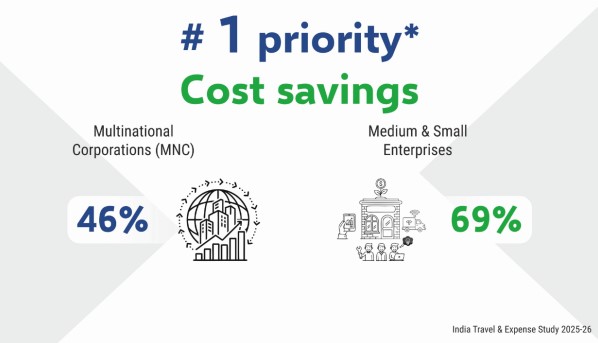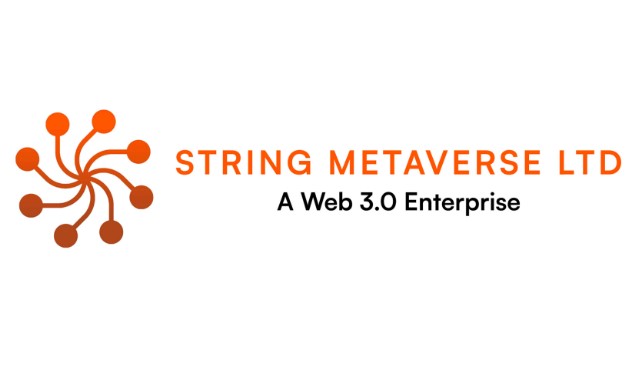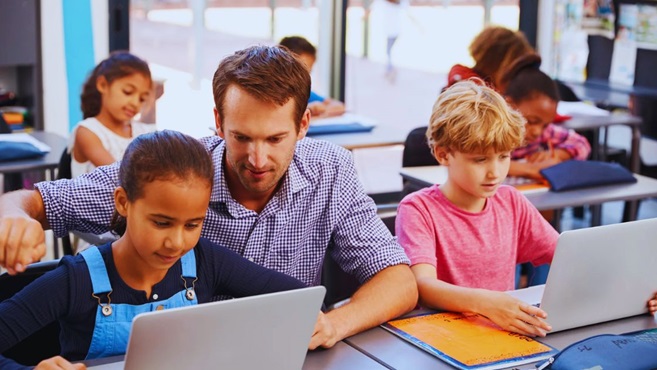The modern classroom has seen a significant transformation with the integration of technology. This evolution is not just about having computers and smartboards; it’s about leveraging various technological tools and resources to create an engaging, interactive, and effective learning environment. This article explores how technology can be harnessed to enhance student learning in the classroom, discussing various tools, strategies, and benefits.
The Evolution of Classroom Technology
Over the past few decades, technology has become an integral part of the educational landscape. From the days of chalkboards to the era of smartboards, the way educators teach and students learn has drastically changed. The integration of technology in classrooms aims to cater to different learning styles, increase student engagement, and provide real-time feedback.
The Importance of Technology in Education
Technology in education is not just a trend; it is a necessity. It helps in creating a more inclusive learning environment, providing students with the skills they need for the future, and enabling teachers to deliver content more effectively. With technology, learning becomes more interactive and accessible, breaking down barriers and fostering a more collaborative and engaging classroom experience.
Tools and Technologies Enhancing Learning
Interactive Whiteboards and Smartboards
Interactive whiteboards and smartboards have replaced traditional blackboards and whiteboards in many classrooms. These tools allow teachers to present information dynamically and interactively, making lessons more engaging. They support multimedia presentations, interactive lessons, and collaborative activities, enhancing student participation and understanding.
Tablets and Laptops
Tablets and laptops have become essential tools in modern education. They provide students with access to a vast array of digital resources, from e-books to educational apps. These devices support personalized learning, enabling students to learn at their own pace and access materials that cater to their individual needs.
Educational Apps and Software
A plethora of educational apps and software is available to enhance learning. Apps like Khan Academy, Duolingo, and Quizlet provide interactive and engaging ways to learn different subjects. These tools often include gamified elements, making learning fun and motivating for students.
Virtual Reality (VR) and Augmented Reality (AR)
VR and AR are cutting-edge technologies that offer immersive learning experiences. VR can take students on virtual field trips, allowing them to explore historical sites, outer space, or underwater ecosystems without leaving the classroom. AR can bring static images and diagrams to life, providing a deeper understanding of complex concepts.
Online Learning Platforms
Online learning platforms such as Google Classroom, Moodle, and Edmodo facilitate blended learning environments. These platforms allow teachers to distribute materials, assign homework, conduct assessments, and communicate with students and parents efficiently. They support a flipped classroom model, where students can access instructional content at home and engage in hands-on activities in class.
Strategies for Effective Integration of Technology
Professional Development for Teachers
Effective integration of technology requires teachers to be well-versed in using these tools. Professional development programs are essential to equip teachers with the necessary skills and knowledge. Training sessions, workshops, and continuous support help teachers stay updated with the latest technological advancements and teaching methodologies.
Creating a Technology-Enhanced Curriculum
A technology-enhanced curriculum incorporates digital tools and resources into lesson plans and activities. This approach ensures that technology is not used for the sake of it but is integrated purposefully to enhance learning outcomes. Teachers should design lessons that leverage technology to facilitate active learning, critical thinking, and problem-solving.
Promoting Digital Literacy
Digital literacy is crucial for students to navigate the digital world safely and effectively. Schools should teach students how to use technology responsibly, evaluate online resources critically, and understand the implications of their digital footprint. Promoting digital citizenship helps students develop the skills needed to use technology ethically and productively.
Encouraging Collaboration and Communication
Technology can foster collaboration and communication among students. Tools like Google Docs, Microsoft Teams, and Slack allow students to work together on projects, share ideas, and provide feedback. These collaborative platforms support teamwork and enhance communication skills, preparing students for the collaborative nature of the modern workplace.
Benefits of Technology in the Classroom
Enhanced Engagement and Motivation
Technology makes learning more engaging and interactive. Multimedia presentations, educational games, and interactive simulations capture students’ attention and make learning enjoyable. This increased engagement leads to higher motivation and a greater willingness to participate in classroom activities.
Personalized Learning Experiences
Technology enables personalized learning by allowing students to learn at their own pace and according to their individual needs. Adaptive learning software adjusts the difficulty level based on the student’s performance, providing targeted support and challenges. This personalized approach helps students achieve their full potential.
Improved Access to Resources
Digital technology provides students with access to a wealth of resources beyond the traditional textbook. Online libraries, databases, and educational websites offer diverse and up-to-date information. This access to a broad range of resources supports deeper learning and research.
Real-Time Feedback and Assessment
Technology facilitates real-time feedback and assessment, allowing teachers to monitor student progress continuously. Tools like online quizzes, polls, and formative assessments provide immediate feedback, helping students understand their strengths and areas for improvement. This timely feedback supports effective learning and development.
Preparation for the Future
Integrating technology in education prepares students for the future. The skills they develop, such as digital literacy, critical thinking, and problem-solving, are essential for success in the 21st-century workplace. Familiarity with technology also helps students adapt to future technological advancements and challenges.
Challenges and Considerations
Ensuring Equal Access
One of the major challenges in integrating technology in education is ensuring equal access for all students. Schools must address the digital divide by providing necessary devices and internet access to underserved communities. Equitable access ensures that all students can benefit from technological advancements.
Balancing Screen Time
While technology offers numerous benefits, it is important to balance screen time to avoid negative impacts on students’ health and well-being. Schools should implement guidelines for screen use and encourage activities that promote physical health and social interaction.
Maintaining Student Data Privacy
The use of digital tools raises concerns about student data privacy. Schools must implement robust data protection measures to safeguard student information. Educators and parents should be aware of the privacy policies of the tools and platforms used and take steps to protect students’ personal data.
Case Studies and Examples
Flipped Classroom Model
The flipped classroom model is an innovative approach that leverages technology to enhance learning. In this model, students access instructional content, such as video lectures, at home and engage in hands-on activities, discussions, and problem-solving exercises in class. This approach allows for more interactive and personalized learning experiences.
Project-Based Learning with Technology
Project-based learning (PBL) integrates technology to create engaging and meaningful learning experiences. For example, students can use digital tools to conduct research, collaborate on projects, create multimedia presentations, and share their findings. PBL with technology fosters critical thinking, creativity, and collaboration skills.
Gamification in Education
Gamification involves incorporating game elements into educational activities to motivate and engage students. Tools like Kahoot!, Classcraft, and Minecraft Education Edition use gamification to create interactive and fun learning experiences. Gamified activities encourage participation, enhance retention, and make learning enjoyable.
Technology has the potential to transform education by enhancing student learning in the classroom. The effective integration of tools such as interactive whiteboards, tablets, educational apps, VR/AR, and online learning platforms can create engaging, personalized, and collaborative learning environments. While challenges like ensuring equal access and maintaining data privacy exist, the benefits of technology in education far outweigh the drawbacks. By embracing technology, educators can prepare students for the future, equipping them with the skills and knowledge needed to succeed in an ever-evolving digital world.
FAQs
1. How can teachers effectively integrate technology into their lessons?
- Teachers can effectively integrate technology by participating in professional development programs, designing a technology-enhanced curriculum, promoting digital literacy, and encouraging collaboration and communication among students. Utilizing tools like interactive whiteboards, educational apps, and online learning platforms can also enhance lesson delivery and engagement.
2. What are some examples of educational apps that enhance learning?
- Some popular educational apps include Khan Academy, which offers video lessons and practice exercises across various subjects; Duolingo, which helps students learn new languages through interactive lessons; and Quizlet, which provides flashcards and games for studying. These apps make learning interactive, personalized, and enjoyable.
3. How does technology support personalized learning?
- Technology supports personalized learning by providing adaptive learning software that adjusts the difficulty level based on the student’s performance. Tools like tablets and laptops give students access to a variety of digital resources, allowing them to learn at their own pace and according to their individual needs. This approach helps students achieve their full potential.
4. What are the challenges of integrating technology in education?
- Challenges include ensuring equal access to technology for all students, balancing screen time to avoid negative health impacts, and maintaining student data privacy. Schools must address the digital divide, implement guidelines for screen use, and adopt robust data protection measures to safeguard student information.
5. How can technology prepare students for the future?
- Technology prepares students for the future by developing essential skills such as digital literacy, critical thinking, and problem-solving. Familiarity with digital tools and platforms equips students with the knowledge needed to adapt to technological advancements and challenges. It also fosters collaboration and communication skills, which are crucial for success in the modern workplace.














